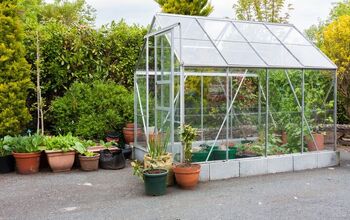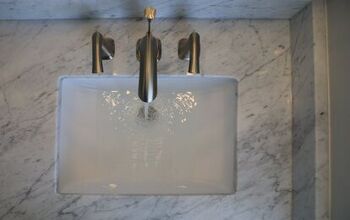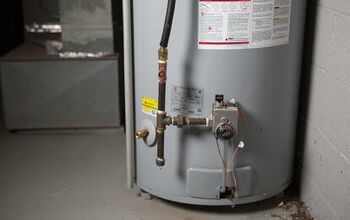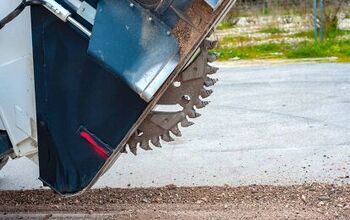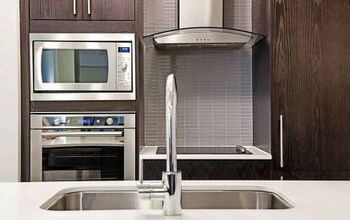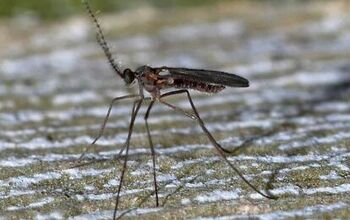How To Prevent Mold In A Greenhouse

Many plant lovers throughout the world dream of having a greenhouse in their yard. While it is a blessing, it can also turn into a nightmare if you find mold. You’re not alone if you want to know how to prevent mold in a greenhouse to avoid headaches.
The best way to prevent mold in a greenhouse is to install vents and run circulation fans to prevent stagnant air. You can also prevent mold if you mulch your soil and avoid overwatering, so water doesn’t regularly evaporate. It’s important to space your plants by 1-3 square feet, regularly remove dead plant matter, and maintain a 50%-80% humidity level.
Insulation can also help you save money on heating costs, prevent thermal loss, and prevent mold in your greenhouse. Follow along as we explore how to prevent mold in a greenhouse without spending a fortune.
Why Are Greenhouses Prone To Mold?
Greenhouses are prone to mold because the environment is perfect for it. Mold, mildew, and other fungi rely on moisture, warmth, and stagnant air to grow. These are the standard conditions in many greenhouses, especially in ones without fans and vents. Because of that, greenhouses are more prone to mold than residential homes, even if you grow plants in your home.
You cannot simply run a greenhouse as usual without care and ventilation. Mold can quickly spread throughout a greenhouse once it forms, which makes removing it much harder. Mold spores travel quickly, and even a gust of wind can spread them throughout a greenhouse.
How To Keep A Greenhouse From Getting Moldy
1. Avoid Overwatering
You’re not alone if you’ve ever overwatered your plants and later regretted it. Doing it once may not cause serious problems, but frequent overwatering can harm your plant and damage the roots. Overwatering can also cause inconvenient problems in your greenhouse, such as mold and mildew.
That’s especially true if your greenhouse has limited airflow, as dark, stagnant air can contribute to the growth of mold and mildew. Only so much water can evaporate at once, so excessive water can stick around for a long time. This can cause a big problem if you have an automated irrigation system, as it may water your plants when they’re still wet.
You must research how much water your plants need, and group them accordingly to prevent overwatering. This can help you save water while gardening, prevent mold, keep your plants healthy, and prevent fungus gnats. Water the plant’s roots instead of the leaves, so water doesn’t pool on the ground in your greenhouse.
2. Improve Ventilation
Poorly ventilated greenhouses are prone to mold, mildew, overheating, and excessive condensation. This can also contribute to pest problems and fungal diseases for your plants. You must ventilate at least 15% of your greenhouse to prevent excessive condensation, stagnant air, and mold.
The easiest way to ventilate your greenhouse is to install roof vents and roll up the sidewalls. That way, you can consistently remove hot, stagnant air from your greenhouse. Ventilation can also help remove excessive moisture throughout the day.
Ideally, you should place vents on each side of the greenhouse to encourage cross ventilation. It’s also a great idea to set up some standard circulation fans near the energy curtain. Proper ventilation makes regulating the temperature much easier, and it also helps ensure healthy carbon dioxide levels.
3. Run A Dehumidifier
Naturally, greenhouses get quite humid, and that humidity won’t dissipate on its own. That’s where dehumidifiers come in, and they can help you prevent mold and maintain a healthy moisture level. Ideally, you should run the dehumidifier in the middle of your greenhouse to cover as much ground as possible.
The dehumidifier won’t work nearly as well if you place it near the walls, as the airflow won’t be as good. You may also experience drafts and air leaks that make your dehumidifier less effective if you place it near the openings. It’s a great idea to buy a humidity monitor, so you can regularly check the humidity level in your greenhouse.
You’re less likely to find mold in your greenhouse if the humidity level stays consistently at 50% to 70%. There’s no need to run your dehumidifier constantly, but you should always have it ready for when the humidity spikes too high.
4. Insulate The Walls
Like your home, you must insulate your greenhouse to encourage heat retention, prevent thermal loss, and reduce the risk of mold. Insulation can help prevent mold because it reduces condensation, so there won’t be so much extra moisture. Ideally, you should at least insulate the walls in your greenhouse, but some people take it further.
For example, you can also insulate the roof and foundation to maximize heat retention and condensation control. You can use everything from bubble wrap and thermal curtains to polycarbonate panels to insulate your greenhouse.
Insulation can also help you save money on heating if you typically run a heat system in your greenhouse. You can always air your greenhouse out if it gets too hot during summer. Luckily, insulation helps ensure the temperature stays at 60 to 80 degrees Fahrenheit.
5. Keep It Clean
Naturally, greenhouses have lots of plant debris, even if you’re quite careful. Greenhouses are full of organic matter, like leaves, soil, and even compost, which can fall and blow around. The mixture of heat, moisture, and decomposing organic matter can essentially feed mold.
That’s why you must regularly prune your plants and sweep the floor in your greenhouse. Remove dead growth as needed and regularly replace soil that’s gone bad. Mold spores can also cling to dead plant matter, so removing it is essential.
6. Mulch Your Soil
It may seem counterintuitive, but soil moisture retention can help prevent mold in a greenhouse, so mulch is invaluable. That’s because mulch helps prevent water evaporation, which is one of the biggest causes of mold in a greenhouse. However, mulch can make your mold problem even worse if you aren’t as careful as possible.
That’s because the moisture retention can backfire and contribute to excessive humidity if you overwater. Because mulch retains water, overwatering can leave it soggy for days in some cases. Not only can this cause mold and mildew to grow, but it can also harm your plants.
You can avoid this problem if you simply research how much water your plants need. It’s not worth watering them if the top 2” of mulch feels damp. As long as you’re careful, mulch can make your greenhouse more easily manageable.
7. Space Your Plants
While grouping your plants can help conserve water, you must not place them too close to one another. Overcrowding your plants can keep them soggy and make evaporation quite difficult. The moisture cannot easily escape from between two plants that are too close together.
Once mold forms, it can easily spread among your clustered plants, and the problem can get out of hand. You can avoid this problem if you space each plant apart by 1 to 3 square feet. This can also encourage healthy growth and prevent leaf and branch damage.
8. Water Your Plants Differently
It’s easy to water your plants by simply pouring water on them and letting it find its way to the roots. However, this can waste water and create puddles on the ground in your greenhouse. You’re more likely to find mold in your greenhouse if this is how you approach watering.
Instead, you should bypass the leaves and aim your water at the soil itself. That way, you can ensure the water goes to the roots and doesn’t land on the leaves. This can prevent mold in your greenhouse and ensure your plants’ roots get enough water.
Summing It Up
Leave 1 to 3 square feet of space between your plants to reduce the risk of mold and mildew. You can also prevent mold if you regularly prune your plants and sweep decomposing organic matter off the floor. Water the roots directly to ensure water doesn’t pool on the ground, and manage the humidity level in your greenhouse with a dehumidifier.
Related Guides:

Nick Durante is a professional writer with a primary focus on home improvement. When he is not writing about home improvement or taking on projects around the house, he likes to read and create art. He is always looking towards the newest trends in home improvement.
More by Nick Durante










